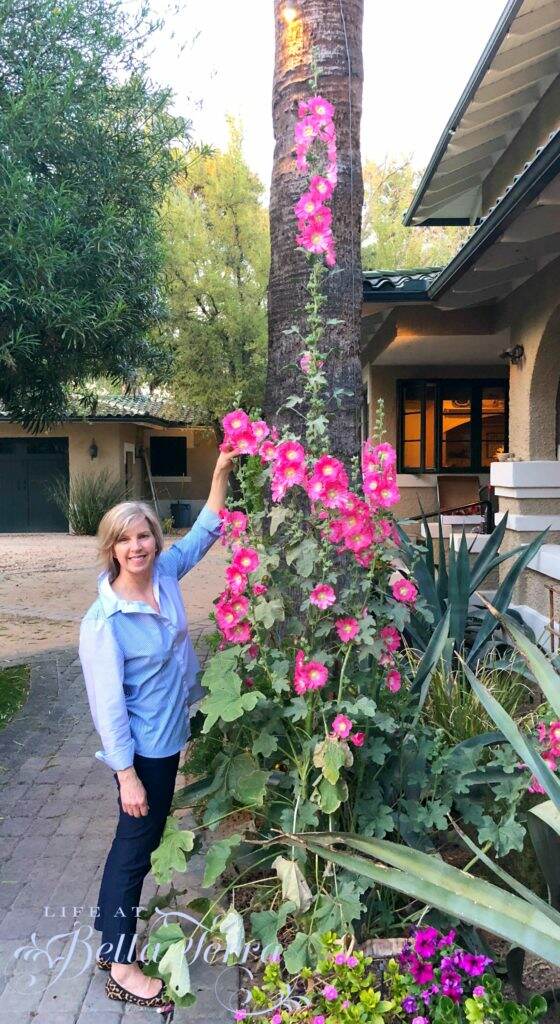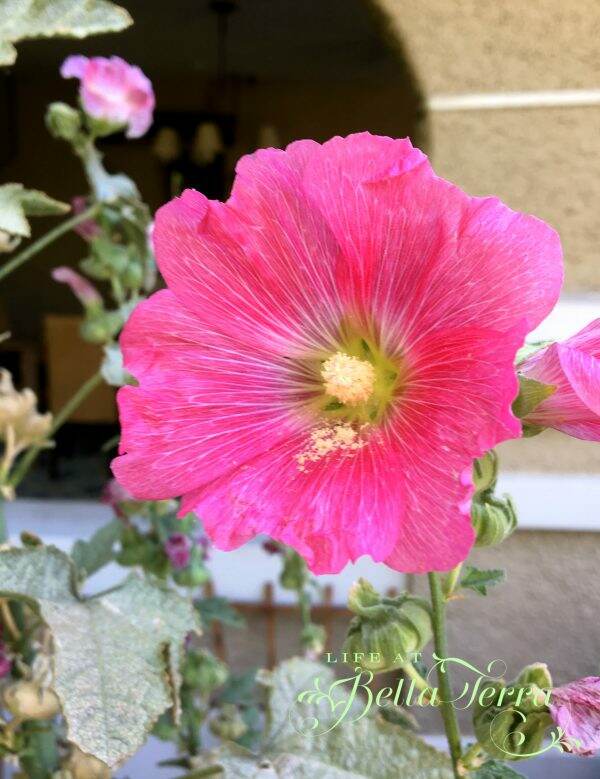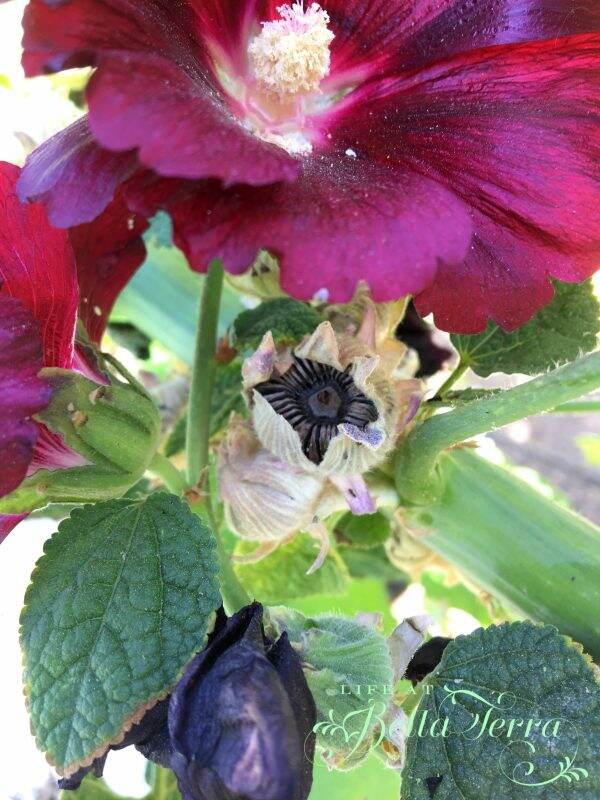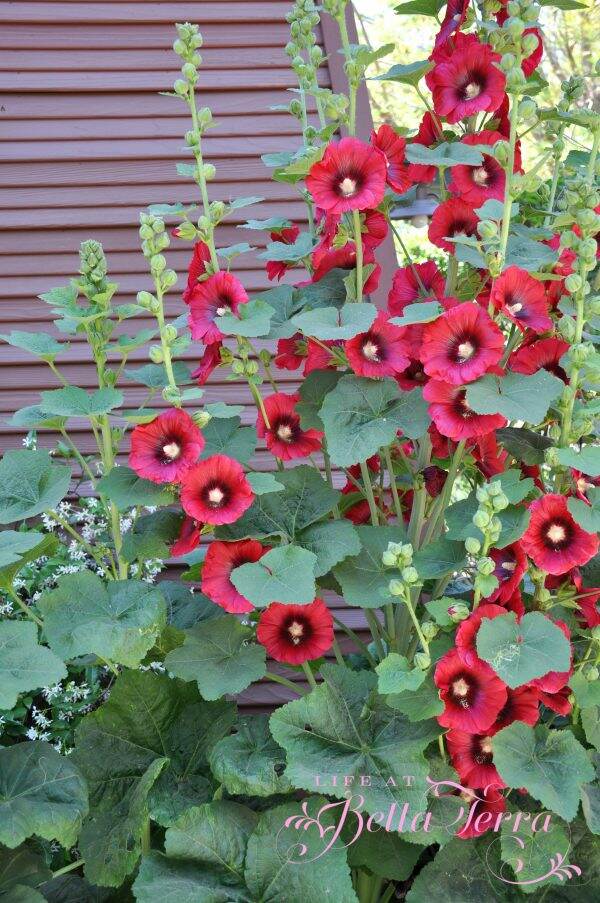Hollyhocks and a Gift for You
We have an ABUNDANCE of hollyhocks growing in our yard. This is the closest thing to Jack and the Beanstalk~~as this small seed grows into a plant that is 10-12 feet tall. All the garden books suggest they grow to 8 feet, however, ours are so much taller. I’m 5’4″ and you can see this plant is double my height.

Hollyhocks, Alcea, is a genus of about 60 species of biennials and short-lived perennials. They grow in moderately fertile, well-drained soil in full sun. It is recommended that you grow as an annual or biennials to limit the spread of hollyhock rust.
They come in a variety of colors. I believe this chocolate-maroon one with a yellow throat is called “Nigra”.


We have hollyhocks with single flowers in pink, fuschia, white and a carmine color.

Depending on your growing zone, they can be propagated in the spring or mid-summer. We seem to have them blooming at all different times of the year in our yard. They tend to take over an area, especially if they are allowed to self-seed. You can see their growth in front of the well tower window.

“Chater’s Double” bears double flowers in a range of bright colors and paler shades, including pink, apricot, red, white, lavendar-blue, yellow and purple. Notice how they look like a cross between a carnation and peony.



When the flower dies, then the seed pod becomes available.


Last year, we collected the seeds in a big plastic bag. However, we failed to separate them according to color or blossom-type. This year, I am trying to divide the seeds according to varietal/color.
Since we have an abundance of seeds, I would love to share them with you. Please check your Plant Zone to see if you can grow hollyhocks. If so, and if you would like some free seeds, please email me at marycrz@cox.net. Include your name and mailing address. Also, please be assured that I will not share any of your personal information.


I would love to see your hollyhocks in full bloom so please share any future photos with me! Happy growing!

Hollyhock information source: The American Horticultural Society A-Z Encyclopedia of Garden Plants by Christopher Brickell & H.Marc Cathey
![]()